Customer Feedback Form: B2B vs B2C.
Customer Feedback Form: B2B vs B2C.
Customer Feedback Form: B2B vs B2C.
Why is customer feedback important? Because it dictates progress on B2B and B2B products and services for the customer to meet their goals.
Why is customer feedback important? Because it dictates progress on B2B and B2B products and services for the customer to meet their goals.
Why is customer feedback important? Because it dictates progress on B2B and B2B products and services for the customer to meet their goals.
The best way to know the level of customer satisfaction is to use a customer feedback form. Every marketer has made such forms, but there’s a difference in how you make a customer feedback form in B2B and B2C. This blog will walk you through the same.

B2B: Partnership First, Kpis Next
Designing customer feedback forms for B2B isn't simply about tracking KPIs; it's about fostering strong partnerships. Now that you know why is customer feedback important in the B2B space, use the following 4 tips to improve your forms:
Go Beyond Standard Formats: Typical surveys can be restrictive. Design customer feedback forms that give a feel of in-depth interviews, focus groups, and shadowing exercises to understand individual decision-makers, motivations, and concerns. Keep the "MOM Test" in mind when designing these non-standard forms. Tinker with different input types because not all things can be answered in MCQs or Long Text.
Let them tell their Story: Don't just collect data; design a customer feedback form with open-ended questions to know a little “more.” This “more” will help you improve your product offerings, services, and problem resolution.
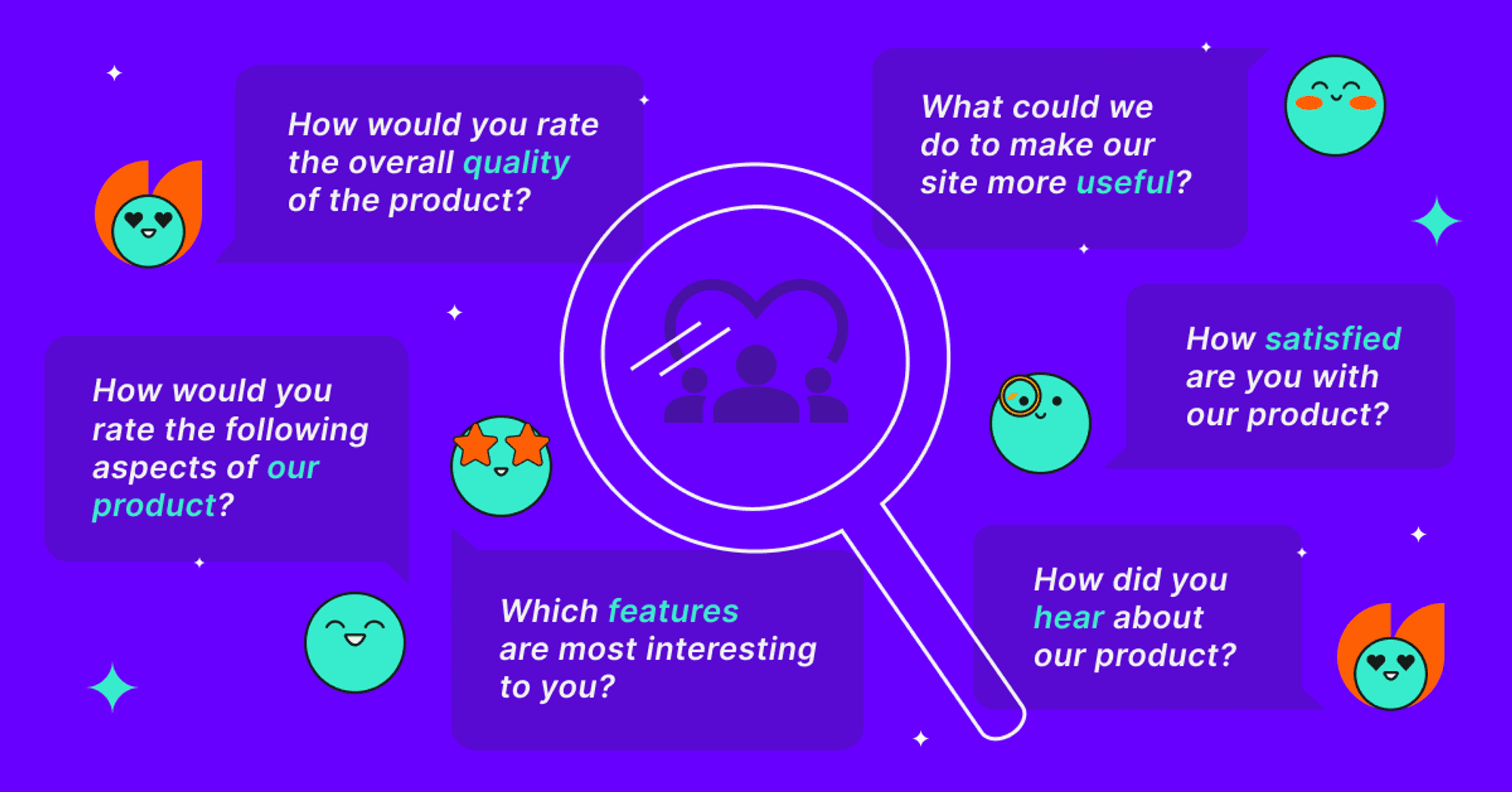
Understanding the customer’s "why" of using your product can often lead to innovation and empathy to help them succeed. It will be used in the customer feedback analysis to categorize users according to their intent, usage, and goals.
Design for Informality: Create a customer feedback form that initiates a comfortable conversation rather than collecting data points that will later turn into an email newsletter content your customer didn't sign up for. Consider visual elements that align with your brand, have rewards to acknowledge progress, and keep each section descriptive of what the customer can expect to be asked about.
Emphasize Transparency: B2B customer feedback doesn't end when you receive the form. At the end of the form, tell the customer what they can expect in the coming days to make them feel heard. We have all been part of surveys where we didn’t know the next step. Avoid this mistake; your customer feedback form will be ahead of the curve.
B2C: Adapt to Preferences and Trends
How to ask for feedback from customers is quite different in the B2C world. The customers use various products and services and are constantly bombarded with bots, texts, and emails. To stand out among the noise, you must go beyond standard designs and use the 4 tips:
Design for Segmentation: Demographics are necessary but not sufficient.

Make a customer feedback form that captures purchase history, social media interactions, and website behavior, enabling precise micro-targeting. This will come in handy during customer feedback analysis.
Use Personalization: An adaptive form makes the interaction with the form more user-friendly. To make this happen, build forms that can ask personalized questions based on the previous response. This is what WorkHack forms have as a feature.
Capture unspoken feedback: Online mentions, complaints, reviews, and comments can also serve as indirect feedback not taken through a customer feedback form. Plus, during the customer feedback analysis, you can opt for a sentiment analysis to quantify the emotional context of customer conversations.
Make the feedback journey Fun: Engage your users with gamification elements in your forms. For example, in the B2B customer feedback form, give away rewards for participating. In the B2C, another fun thing you can do is publicly recognize the winners to encourage organic growth and promote brand awareness.
Recap: What All to Keep In Mind
Whether designing a customer feedback form for B2B or B2C, remember that for higher conversion rates and minimum drop-offs, you must start with an engaging form that includes a mix of closed- and open-ended questions.
Play with input types, target the messaging vis customer segmentation, and break down the customer feedback form into sections for a smoother customer feedback analysis. Lastly, gamify with rewards to make the experience fun.
A B2B and B2C customer feedback form isn't just a box-ticking activity. It is the path to knowing your customers. Pay attention to it, and you’ll soon improve your product, marketing, and customer success metrics!
The best way to know the level of customer satisfaction is to use a customer feedback form. Every marketer has made such forms, but there’s a difference in how you make a customer feedback form in B2B and B2C. This blog will walk you through the same.

B2B: Partnership First, Kpis Next
Designing customer feedback forms for B2B isn't simply about tracking KPIs; it's about fostering strong partnerships. Now that you know why is customer feedback important in the B2B space, use the following 4 tips to improve your forms:
Go Beyond Standard Formats: Typical surveys can be restrictive. Design customer feedback forms that give a feel of in-depth interviews, focus groups, and shadowing exercises to understand individual decision-makers, motivations, and concerns. Keep the "MOM Test" in mind when designing these non-standard forms. Tinker with different input types because not all things can be answered in MCQs or Long Text.
Let them tell their Story: Don't just collect data; design a customer feedback form with open-ended questions to know a little “more.” This “more” will help you improve your product offerings, services, and problem resolution.

Understanding the customer’s "why" of using your product can often lead to innovation and empathy to help them succeed. It will be used in the customer feedback analysis to categorize users according to their intent, usage, and goals.
Design for Informality: Create a customer feedback form that initiates a comfortable conversation rather than collecting data points that will later turn into an email newsletter content your customer didn't sign up for. Consider visual elements that align with your brand, have rewards to acknowledge progress, and keep each section descriptive of what the customer can expect to be asked about.
Emphasize Transparency: B2B customer feedback doesn't end when you receive the form. At the end of the form, tell the customer what they can expect in the coming days to make them feel heard. We have all been part of surveys where we didn’t know the next step. Avoid this mistake; your customer feedback form will be ahead of the curve.
B2C: Adapt to Preferences and Trends
How to ask for feedback from customers is quite different in the B2C world. The customers use various products and services and are constantly bombarded with bots, texts, and emails. To stand out among the noise, you must go beyond standard designs and use the 4 tips:
Design for Segmentation: Demographics are necessary but not sufficient.

Make a customer feedback form that captures purchase history, social media interactions, and website behavior, enabling precise micro-targeting. This will come in handy during customer feedback analysis.
Use Personalization: An adaptive form makes the interaction with the form more user-friendly. To make this happen, build forms that can ask personalized questions based on the previous response. This is what WorkHack forms have as a feature.
Capture unspoken feedback: Online mentions, complaints, reviews, and comments can also serve as indirect feedback not taken through a customer feedback form. Plus, during the customer feedback analysis, you can opt for a sentiment analysis to quantify the emotional context of customer conversations.
Make the feedback journey Fun: Engage your users with gamification elements in your forms. For example, in the B2B customer feedback form, give away rewards for participating. In the B2C, another fun thing you can do is publicly recognize the winners to encourage organic growth and promote brand awareness.
Recap: What All to Keep In Mind
Whether designing a customer feedback form for B2B or B2C, remember that for higher conversion rates and minimum drop-offs, you must start with an engaging form that includes a mix of closed- and open-ended questions.
Play with input types, target the messaging vis customer segmentation, and break down the customer feedback form into sections for a smoother customer feedback analysis. Lastly, gamify with rewards to make the experience fun.
A B2B and B2C customer feedback form isn't just a box-ticking activity. It is the path to knowing your customers. Pay attention to it, and you’ll soon improve your product, marketing, and customer success metrics!
The best way to know the level of customer satisfaction is to use a customer feedback form. Every marketer has made such forms, but there’s a difference in how you make a customer feedback form in B2B and B2C. This blog will walk you through the same.

B2B: Partnership First, Kpis Next
Designing customer feedback forms for B2B isn't simply about tracking KPIs; it's about fostering strong partnerships. Now that you know why is customer feedback important in the B2B space, use the following 4 tips to improve your forms:
Go Beyond Standard Formats: Typical surveys can be restrictive. Design customer feedback forms that give a feel of in-depth interviews, focus groups, and shadowing exercises to understand individual decision-makers, motivations, and concerns. Keep the "MOM Test" in mind when designing these non-standard forms. Tinker with different input types because not all things can be answered in MCQs or Long Text.
Let them tell their Story: Don't just collect data; design a customer feedback form with open-ended questions to know a little “more.” This “more” will help you improve your product offerings, services, and problem resolution.

Understanding the customer’s "why" of using your product can often lead to innovation and empathy to help them succeed. It will be used in the customer feedback analysis to categorize users according to their intent, usage, and goals.
Design for Informality: Create a customer feedback form that initiates a comfortable conversation rather than collecting data points that will later turn into an email newsletter content your customer didn't sign up for. Consider visual elements that align with your brand, have rewards to acknowledge progress, and keep each section descriptive of what the customer can expect to be asked about.
Emphasize Transparency: B2B customer feedback doesn't end when you receive the form. At the end of the form, tell the customer what they can expect in the coming days to make them feel heard. We have all been part of surveys where we didn’t know the next step. Avoid this mistake; your customer feedback form will be ahead of the curve.
B2C: Adapt to Preferences and Trends
How to ask for feedback from customers is quite different in the B2C world. The customers use various products and services and are constantly bombarded with bots, texts, and emails. To stand out among the noise, you must go beyond standard designs and use the 4 tips:
Design for Segmentation: Demographics are necessary but not sufficient.

Make a customer feedback form that captures purchase history, social media interactions, and website behavior, enabling precise micro-targeting. This will come in handy during customer feedback analysis.
Use Personalization: An adaptive form makes the interaction with the form more user-friendly. To make this happen, build forms that can ask personalized questions based on the previous response. This is what WorkHack forms have as a feature.
Capture unspoken feedback: Online mentions, complaints, reviews, and comments can also serve as indirect feedback not taken through a customer feedback form. Plus, during the customer feedback analysis, you can opt for a sentiment analysis to quantify the emotional context of customer conversations.
Make the feedback journey Fun: Engage your users with gamification elements in your forms. For example, in the B2B customer feedback form, give away rewards for participating. In the B2C, another fun thing you can do is publicly recognize the winners to encourage organic growth and promote brand awareness.
Recap: What All to Keep In Mind
Whether designing a customer feedback form for B2B or B2C, remember that for higher conversion rates and minimum drop-offs, you must start with an engaging form that includes a mix of closed- and open-ended questions.
Play with input types, target the messaging vis customer segmentation, and break down the customer feedback form into sections for a smoother customer feedback analysis. Lastly, gamify with rewards to make the experience fun.
A B2B and B2C customer feedback form isn't just a box-ticking activity. It is the path to knowing your customers. Pay attention to it, and you’ll soon improve your product, marketing, and customer success metrics!
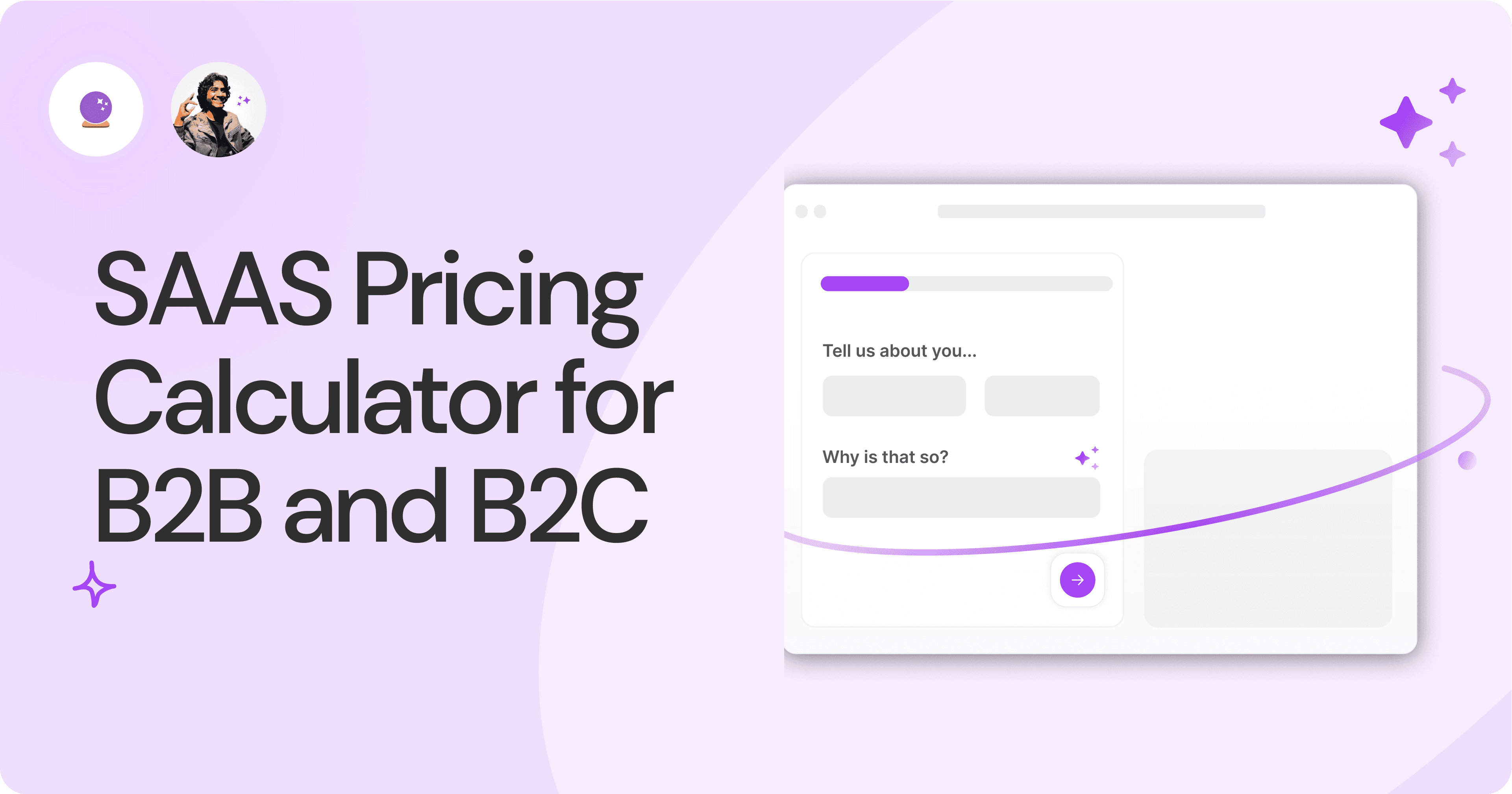
SAAS Pricing Calculators: B2B v B2C Online Forms.
The SaaS pricing calculator is an essential tool for both B2B and B2C SaaS companies. But how do you build it, right? We have you covered.
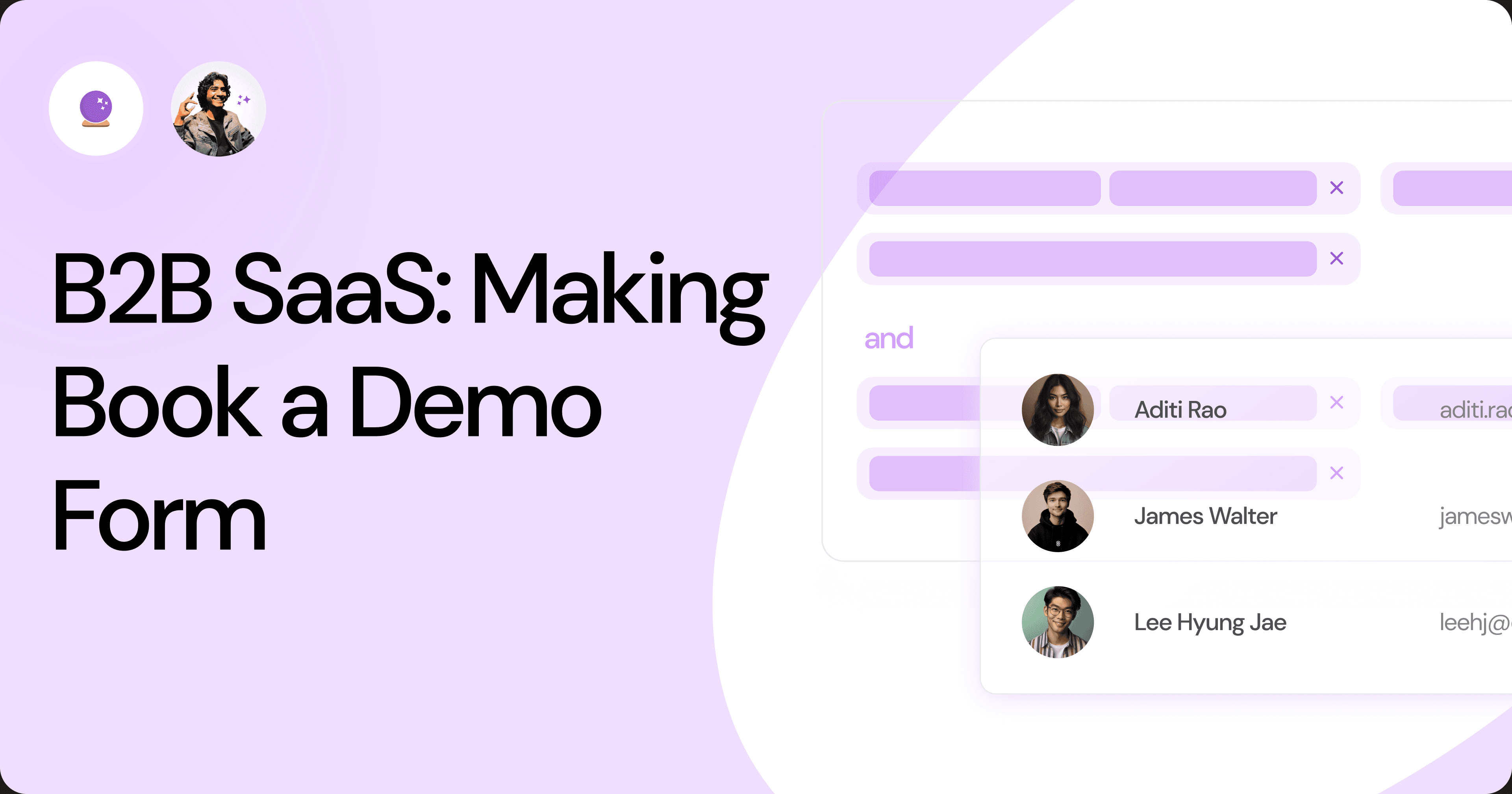
B2B SaaS: Making Book a Demo Form.
Having the perfect book a demo form for B2B SaaS is the first step in capturing leads. There are a few fundamental techniques to get this form right. Read on.

How to Get Started With SaaS Onboarding.
SaaS onboarding is essential for customer onboarding in B2B and B2C SaaS. Let’s understand its fundamentals, including the metrics.
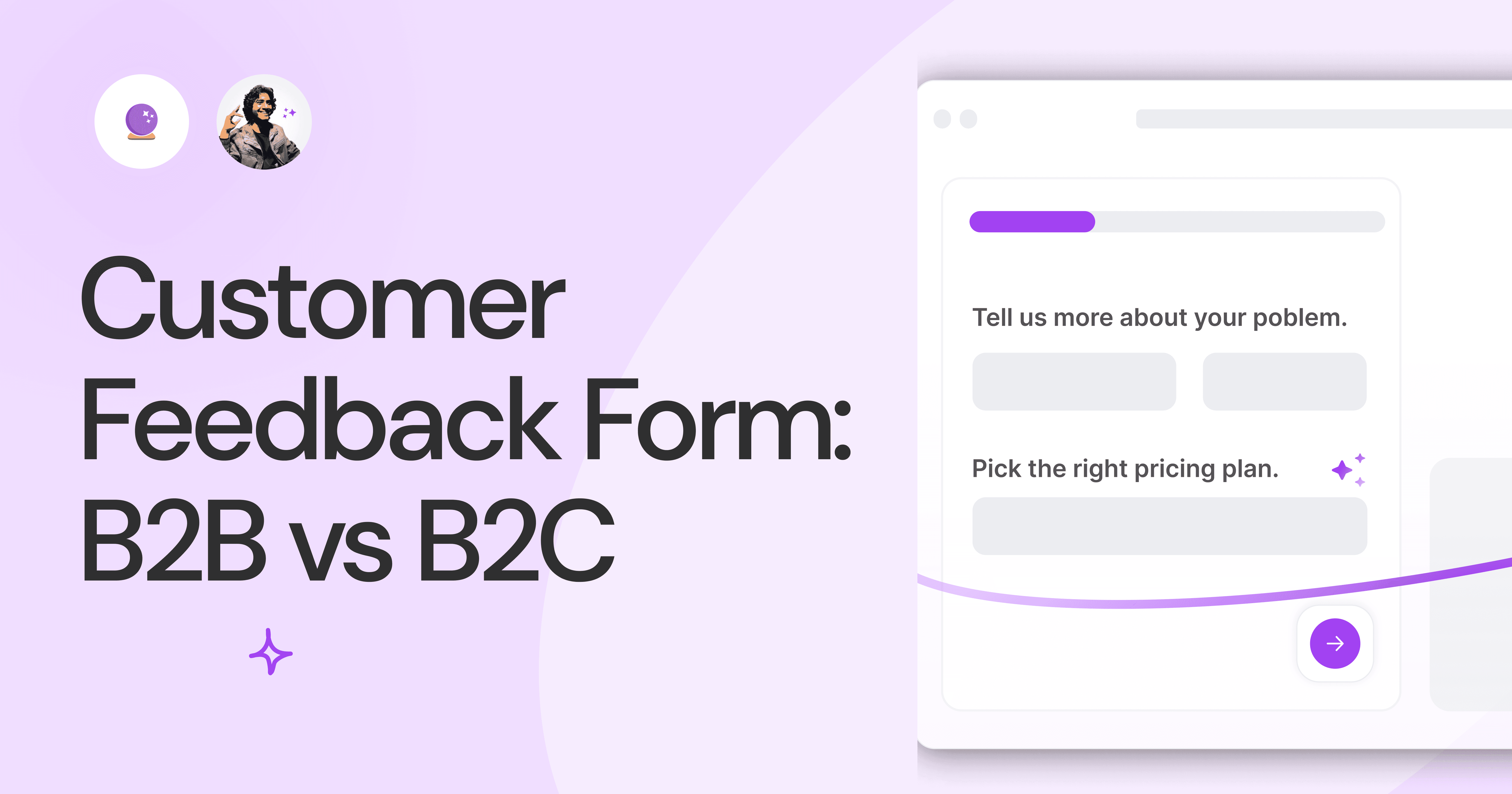
Customer Feedback Form: B2B vs B2C.
Why is customer feedback important? Because it dictates progress on B2B and B2B products and services for the customer to meet their goals.
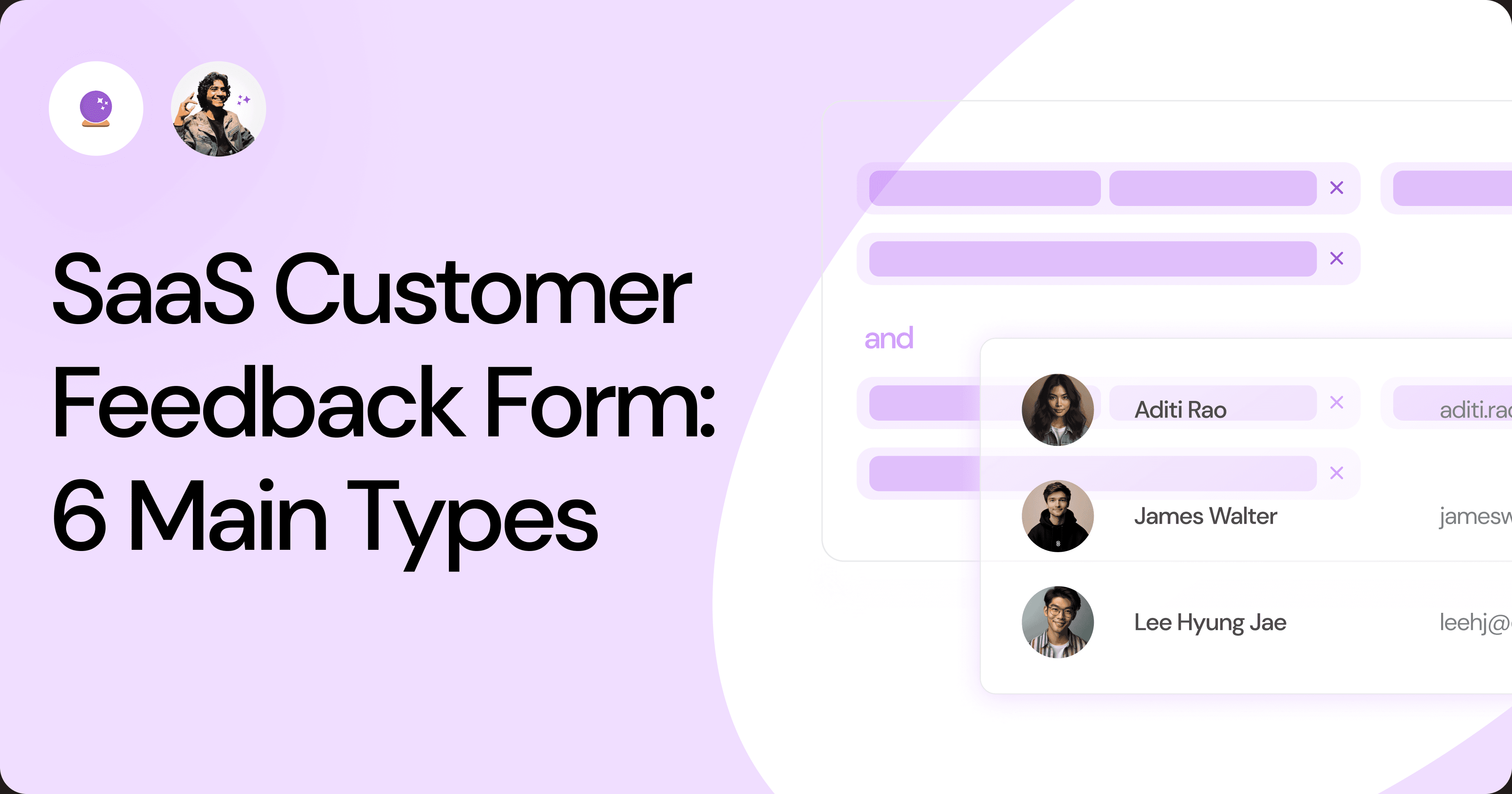
SaaS Customer Feedback Form: 6 Main Types.
As much as SaaS is self-serve, the role of a customer feedback form is highly relevant. There are different types, each with its use case and sections.
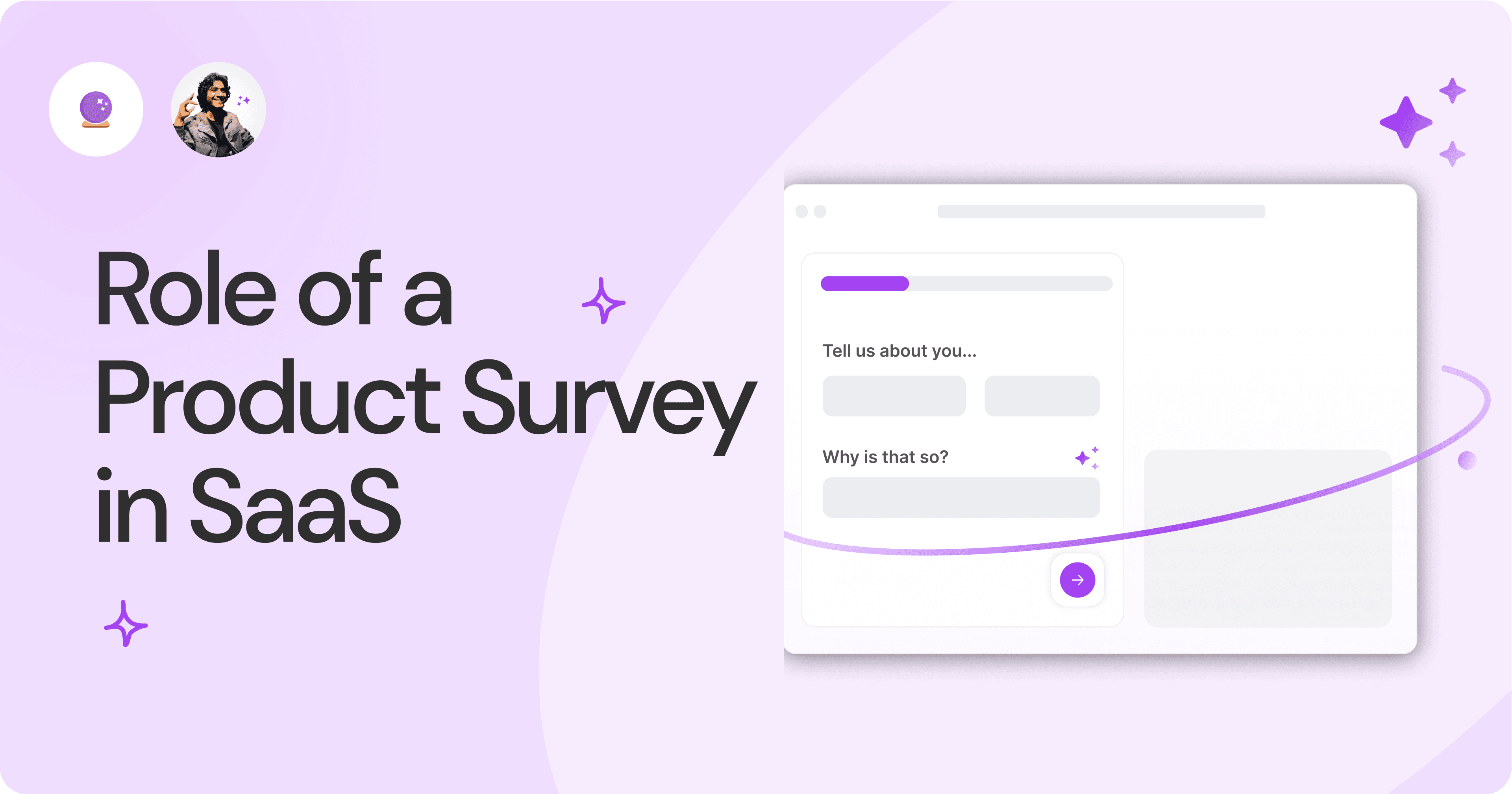
Role of a Product Survey in SaaS.
SaaS is all about creating products for specific use cases. This is where a product survey becomes all the more important to know the user deeply.
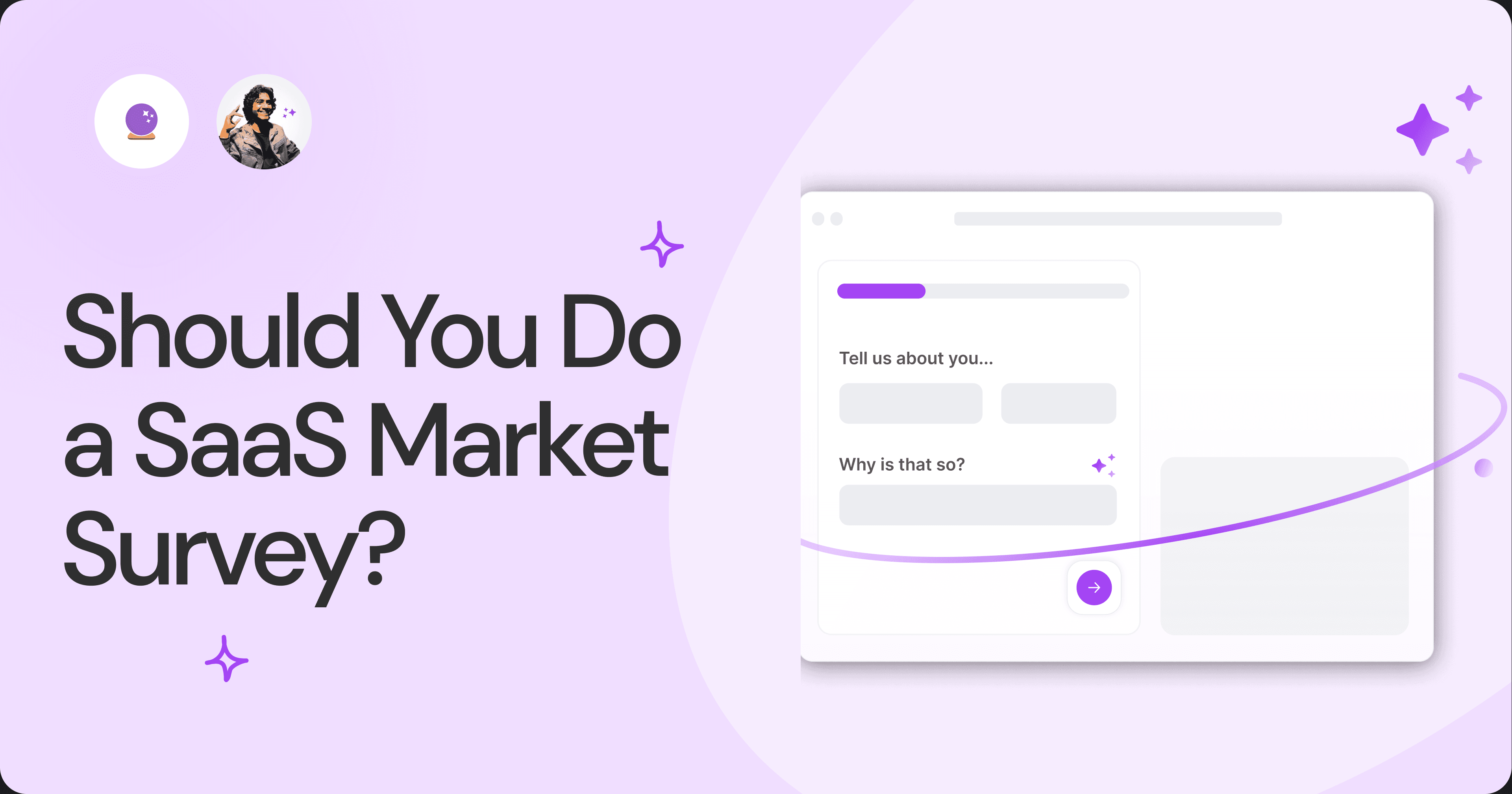
Should You Do a SaaS Market Survey?
Every SaaS company wants to grow fast. But without a market survey, growth isn't possible or sustainable. Let’s see how to do a market survey.

SAAS Pricing Calculators: B2B v B2C Online Forms.
The SaaS pricing calculator is an essential tool for both B2B and B2C SaaS companies. But how do you build it, right? We have you covered.

B2B SaaS: Making Book a Demo Form.
Having the perfect book a demo form for B2B SaaS is the first step in capturing leads. There are a few fundamental techniques to get this form right. Read on.

How to Get Started With SaaS Onboarding.
SaaS onboarding is essential for customer onboarding in B2B and B2C SaaS. Let’s understand its fundamentals, including the metrics.

Customer Feedback Form: B2B vs B2C.
Why is customer feedback important? Because it dictates progress on B2B and B2B products and services for the customer to meet their goals.

SaaS Customer Feedback Form: 6 Main Types.
As much as SaaS is self-serve, the role of a customer feedback form is highly relevant. There are different types, each with its use case and sections.

Role of a Product Survey in SaaS.
SaaS is all about creating products for specific use cases. This is where a product survey becomes all the more important to know the user deeply.

Should You Do a SaaS Market Survey?
Every SaaS company wants to grow fast. But without a market survey, growth isn't possible or sustainable. Let’s see how to do a market survey.

SAAS Pricing Calculators: B2B v B2C Online Forms.
The SaaS pricing calculator is an essential tool for both B2B and B2C SaaS companies. But how do you build it, right? We have you covered.

B2B SaaS: Making Book a Demo Form.
Having the perfect book a demo form for B2B SaaS is the first step in capturing leads. There are a few fundamental techniques to get this form right. Read on.

How to Get Started With SaaS Onboarding.
SaaS onboarding is essential for customer onboarding in B2B and B2C SaaS. Let’s understand its fundamentals, including the metrics.

Customer Feedback Form: B2B vs B2C.
Why is customer feedback important? Because it dictates progress on B2B and B2B products and services for the customer to meet their goals.

SaaS Customer Feedback Form: 6 Main Types.
As much as SaaS is self-serve, the role of a customer feedback form is highly relevant. There are different types, each with its use case and sections.

Role of a Product Survey in SaaS.
SaaS is all about creating products for specific use cases. This is where a product survey becomes all the more important to know the user deeply.

Should You Do a SaaS Market Survey?
Every SaaS company wants to grow fast. But without a market survey, growth isn't possible or sustainable. Let’s see how to do a market survey.

Nine Types of Healthcare and Medical Forms.
Medical forms are a must-have for any healthcare business or practitioner. Learn about the different kinds of medical and healthcare forms.

4 Tips for Better Medical History Forms.
Medical history forms are central to patient care, onboarding, and medical administration records. Learn how to make them easier to fill.

How to Build Mental Health Intake Forms?
Mental health intake forms are not like patient intake forms. Mental health intake forms deal with far more sensitive data and have specific design methods.

What, Why and How of Telemedicine Forms.
Telemedicine is on the rise and with different form builders out there, which one best suits your needs as a healthcare services provider?

3 Reasons for Major Drop-Offs in Medical Forms.
No matter which healthcare form we pick, there are major drop-off reasons. We shall dive into the top 3 and learn how to resolve them in your next form.

Patient Onboarding Forms - From Click to Clinic.
Patient onboarding forms are the first touchpoint for patients; getting this right for higher conversion rates is a must-have. Learn how to perfect them now.

5 Key Parts of a Good Patient Satisfaction Form.
The goal of patient satisfaction surveys is to course-correct the services of a healthcare provider. Patient feedback leads to a culture of patient-centric care.

Build Quick and Easy Medical Release Forms.
Every HIPAA-compliant healthcare provider comes across medical release forms that involve details from medical history forms. Can they be shipped fast? Yes.

SAAS Pricing Calculators: B2B v B2C Online Forms.
The SaaS pricing calculator is an essential tool for both B2B and B2C SaaS companies. But how do you build it, right? We have you covered.

B2B SaaS: Making Book a Demo Form.
Having the perfect book a demo form for B2B SaaS is the first step in capturing leads. There are a few fundamental techniques to get this form right. Read on.

How to Get Started With SaaS Onboarding.
SaaS onboarding is essential for customer onboarding in B2B and B2C SaaS. Let’s understand its fundamentals, including the metrics.

Customer Feedback Form: B2B vs B2C.
Why is customer feedback important? Because it dictates progress on B2B and B2B products and services for the customer to meet their goals.

SaaS Customer Feedback Form: 6 Main Types.
As much as SaaS is self-serve, the role of a customer feedback form is highly relevant. There are different types, each with its use case and sections.

Role of a Product Survey in SaaS.
SaaS is all about creating products for specific use cases. This is where a product survey becomes all the more important to know the user deeply.

Should You Do a SaaS Market Survey?
Every SaaS company wants to grow fast. But without a market survey, growth isn't possible or sustainable. Let’s see how to do a market survey.
Subscribe to stay updated.
Subscribe to stay updated.
Subscribe to stay updated.
HC

HC

HC

HC

70+ people from across industries read our emails.
HC

HC

70+ people from across industries read our emails.
HC

HC

HC

70+ people from across industries read our emails.




Bangalore, India / San Francisco, US
WorkHack Inc. 2023
Bangalore, India
San Francisco, US
WorkHack Inc. 2023
WorkHack Inc. 2023
Bangalore, India / San Francisco, US
WorkHack Inc. 2023
Bangalore, India / San Francisco, US




